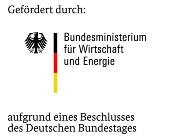Abstract
The requirement towards slender and more filigree constructions with high loadings consistently leads to the application of high-strength steels. Decisive for the application of high-strength steels is, beside of the question of stability and for bridges and similar fatigue, mainly the type of joints and connections. How to effectively realize the procedure of welding high-strength steels S690 to normal-strength steels S355 by fillet welds is still an open question. However, this is a standard situation existing in practice due to the fact that the choice of steel grade usually is adapted to the utilization and also because secondary components with small loadings are often added to the structure. Design concepts in EN 1993-1-8 [58] do not consider the strength of the weld material. In hybrid connections the weld material has to be overmatching to the high strength steel, but as strength only the mild steel strength may be taken into account. The objective of the project is the review of the modified design resistance function or the development of a realistic and comprehensive design model for determining the carrying capacity of hybrid connections with fillet welds of normal- and high-strength steels for the utilization in steel structures and related areas (plant and crane construction) in order to improve the normative carrying capacity of fillet welds for hybrid fillet weld connections in the currently used steel standards. Considering in future the filler metal in combination with the different base materials an appropriate choice of optimal combination of carrying capacity, toughness and deformation capacity may be achieved. In the frame of the research project component tests are performed on one hand for the characterization of the carrying capacity and the deformation capacity of the connections, while on the other hand extensive material tests are realized for the determination of the mechanical properties. Based on the correlation between component tests and mechanical properties a detailed statistical evaluation of the results is planned to be developed.

On the basis of the evaluation of the experimental test results and the results of the statistical evaluation, the applicability of the adapted design model was confirmed. The results will be summarized to recommendations which on one side cover the construction and welding procedure of hybrid connections for use in practice and on the other side give design rules which will be derived as a proposal for future code development for the German mirror group to be introduced into the European CEN Working Group.
Thus, the objective of this research project was accomplished.
Project Team
Institut für Konstruktion und Entwurf, Universität Stuttgart
Leiterin der Forschungsstelle:
Prof. Dr.-Ing. U. Kuhlmann
M. Sc. Jennifer Spiegler
Project Funding
 This IGF-Project from the German Steel Commission, DASt, was funded by the AiF within the scope of the cooperative Industrial Research Program (IGF) by the federal Ministry of Economic Affairs and Energy based on a decision from the German Bundestag.
This IGF-Project from the German Steel Commission, DASt, was funded by the AiF within the scope of the cooperative Industrial Research Program (IGF) by the federal Ministry of Economic Affairs and Energy based on a decision from the German Bundestag.
Other Partners:
- Dillinger Hüttenwerke, Dillingen/Saar
- Voestalpine Grobbelch GmbH, Linz
- Voestalpine Böhler Welding Germany GmbH, Hamm
- ThyssenKrupp Steel Europe AG, Duisburg
- ESAB Welding & Cutting GmbH, Solingen
- Schweißtechnische Lehr- und Versuchsanstalt Halle GmbH, Halle
- RSB Rudolstädter Systembau GmbH, Rudolstadt
Duration of the Project
2014 - 2017
Previous Projects
Final Report
An extract from the final report can be downloaded here.

